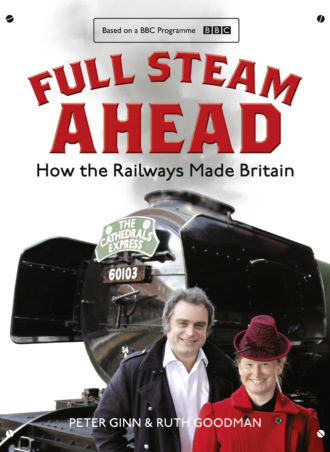
Полная версия
Full Steam Ahead: How the Railways Made Britain

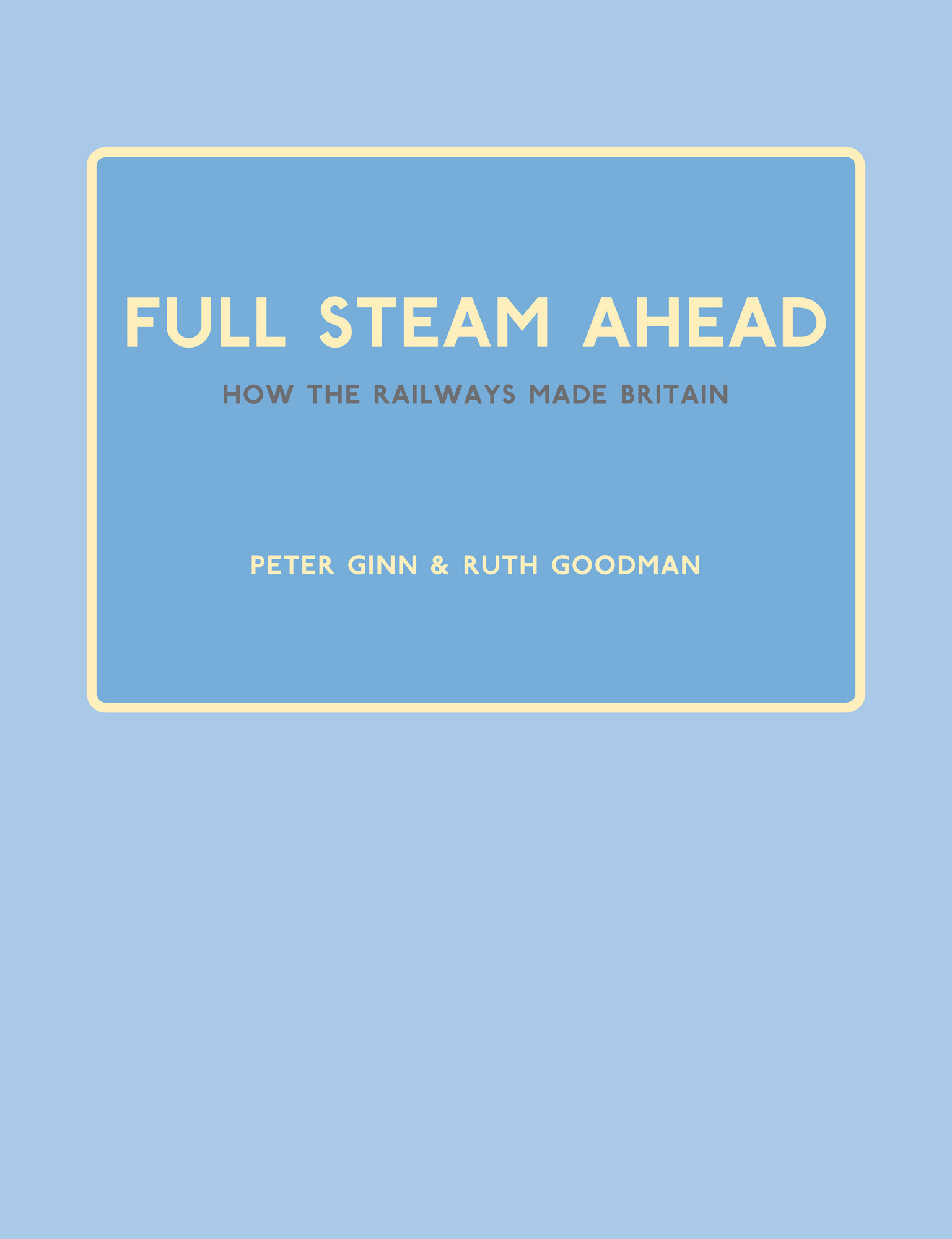
Copyright
William Collins
An imprint of HarperCollinsPublishers 1 London Bridge Street London SE1 9GF
WilliamCollinsBooks.com
This eBook edition published by William Collins in 2016
© Lion Television Limited, 2016
Photographs © individual copyright holders
Design and layout © HarperCollins Publishers 2016
By arrangement with the BBC.
The BBC logo is a trademark of the British Broadcasting Corporation and is used under licence.
BBC logo © BBC 1996
The authors assert their moral right to be identified as the authors of this work.
Full Steam Ahead was produced by Lion Television (an All3 Media company) for the BBC in partnership with the Open University.
Cover photograph © Stuart Elliot/Lion TV with permission from the National Railway Museum.
A catalogue record for this book is available from the British Library.
All rights reserved under International and Pan-American Copyright Conventions. By payment of the required fees, you have been granted the non-exclusive, non-transferable right to access and read the text of this eBook on-screen. No part of this text may be reproduced, transmitted, downloaded, decompiled, reverse engineered, or stored in or introduced into any information storage and retrieval system, in any form or by any means, whether electronic or mechanical, now known or hereinafter invented, without the express written permission of HarperCollins Publishers.
Source ISBN: 9780008194314
eBook Edition © July 2016 ISBN: 9780008194321
Version: 2016-07-26
Dedication
This book is dedicated to all the men, women and children who have given life, limb or time to the creation and preservation of Britain’s railways.
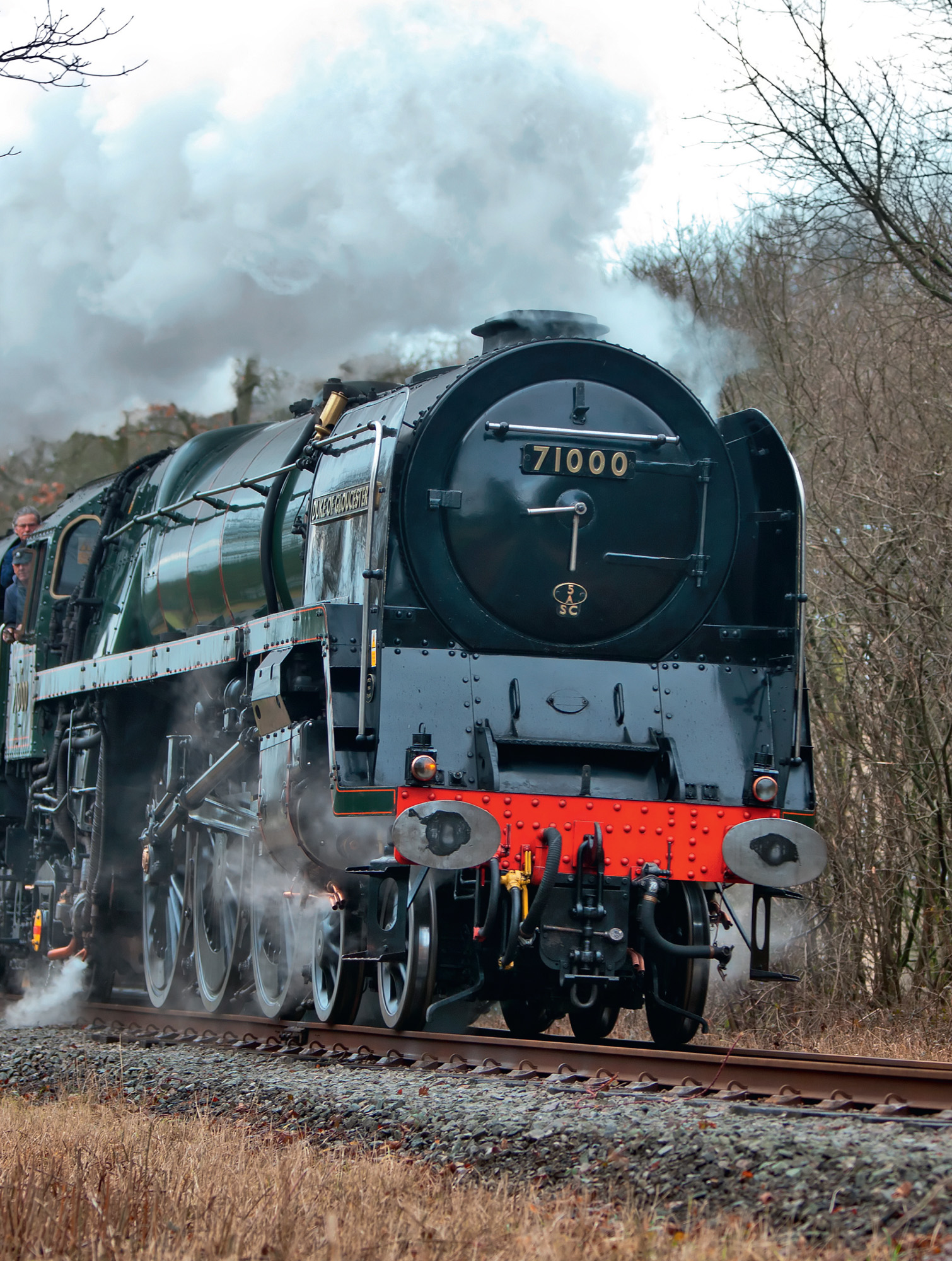
CONTENTS
Cover
Title Page
Copyright
Dedication
Introduction
Chapter One: INDUSTRY
Chapter Two: MOVING PEOPLE
Chapter Three: AGRICULTURE
Chapter Four: COMMUNICATION
Chapter Five: TRADE
Chapter Six: LEISURE
Index
Picture Credits
Acknowledgements
About the Authors
About the Publisher


The Victorian era was a period of immense change in Britain. It saw both the flowering and culmination of the agricultural and industrial revolutions, huge social reforms and massive technological advancements. The greatest of these was almost certainly the steam railway.
The railways changed the world. This is a bold statement, but it is unquestionably true. How scientific advancement comes about and the impact it has upon society is a complex issue. We often view our history in segments that are allocated according to the lifespans of rulers – for example, ‘the Victorian era’. However, the simple fact is that we are all part of a human race that ebbs and flows as it develops and changes over an indeterminate period of time – and this process is impossible to comprehend completely as it is happening. To divide history up into segments is one step towards trying to understand it. The timeframe of the birth of the steam railways, and their subsequent development and decline, is akin to the lifespan of a human being. Therefore, the age of the steam railways is a good lens through which we can study the nineteenth and twentieth centuries.
Unlike most rulers whom periods of time are named after, the steam railways dramatically changed our lives and the lives of our ancestors. The world was already becoming a smaller place. To paraphrase Roald Dahl, at the time of the advent of the railways, there were only a couple of pages in the atlas left to fill in. The idea of using steam power was not new, but the creation of an effective engine that could convert energy into work was most certainly a massive innovation. The first steam engines had a major impact. They were big and heavy, but within reason they could be situated anywhere. Once in place, the steam engines provided power, thus reducing the need for labour. They found their calling in some factories, in agriculture and in mining.
Furthermore, railways were not a new concept. Throughout history, there has been archaeological evidence that indicates the use of trackways in various parts of the world. Also, the concept of wheels running on steel rails is not too dissimilar to that of boats travelling on canal water, when it is broken down to a basic mathematical level. Both methods of transportation reduce friction, allowing heavier loads to be pulled using less force. Just like the steam engines that pumped water out of mines, horse-drawn railways moved material from the very same mines down to the ports. However, it was the successful marriage of these two concepts that changed the world.
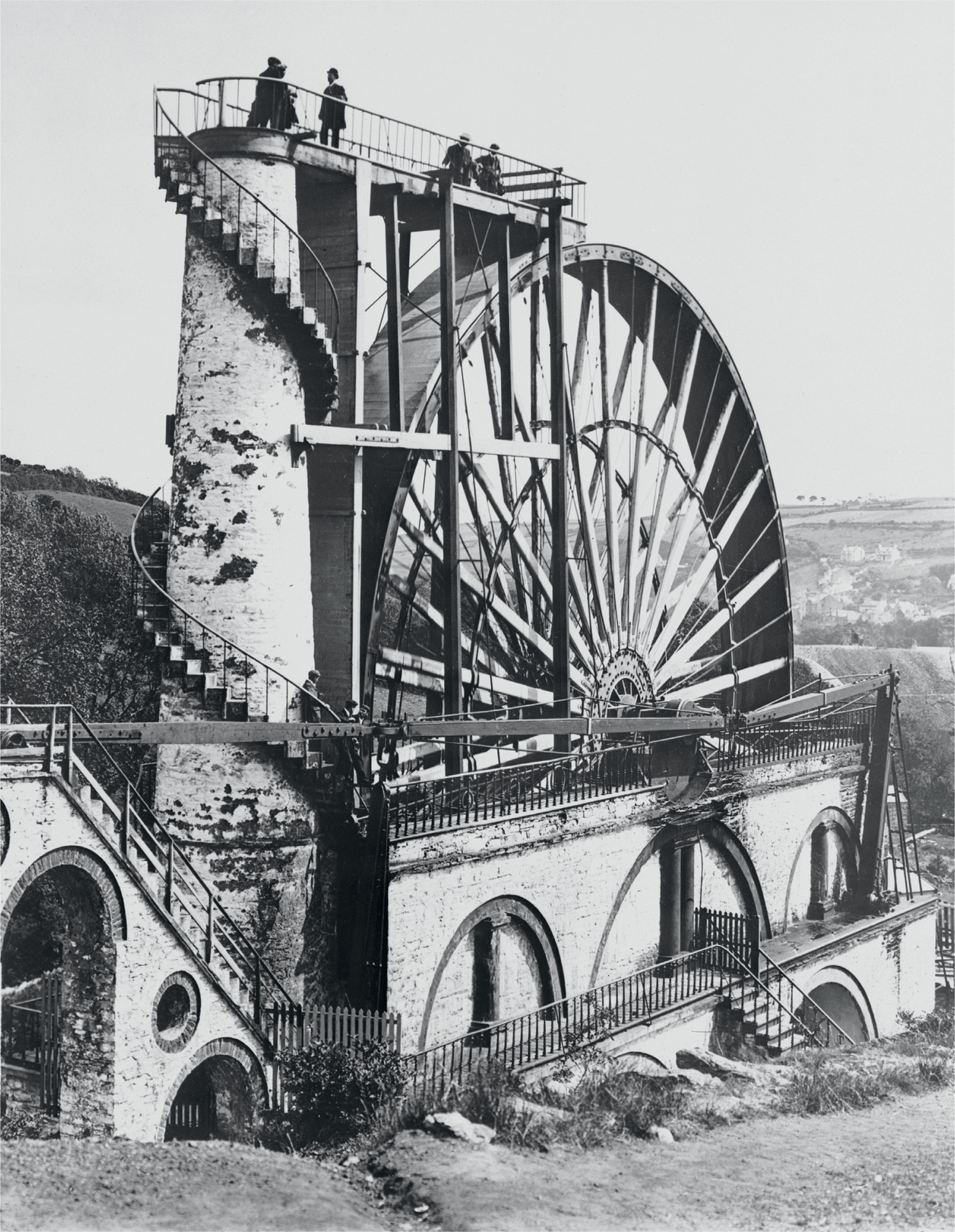
The Victorians were unstoppable innovators, and their era was marked by massive industrial and technological development. This is the giant waterwheel at Laxey, Isle of Man, constructed by the Casement firm in 1854.
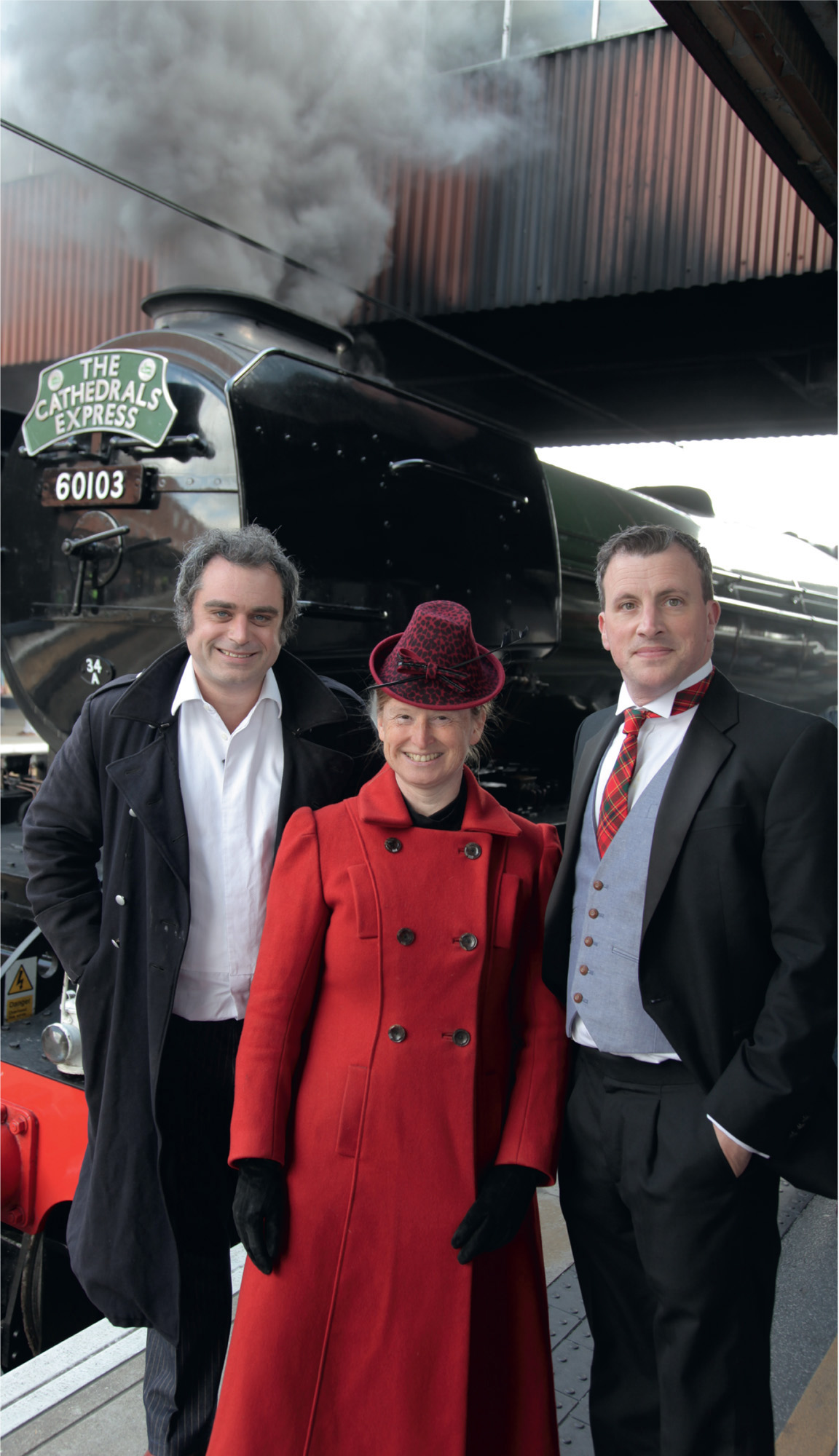
The presenters of Full Steam Ahead, historians Peter Ginn, Ruth Goodman and Alex Langlands, about to board the preserved steam engine, 60103 The Cathedrals Express.
FULL STEAM AHEAD
In the nineteenth century, the term ‘locomotive engine’ was first used to distinguish a steam-powered engine that could move forwards and backwards from a completely static engine that merely provided power. Once the idea of a moving engine was proven to be viable, it led to a frantic creation of railways that spread across the globe. The nineteenth century saw an exponential amount of scientific development and social change, and so much of that is tied into the development of the network of railways, in both Britain and around the world.
This book has been produced to accompany the BBC 2 series Full Steam Ahead. In order to help ourselves examine the many and varied everyday stories from the steam railways, we divided the television programmes loosely into six themes: industry; moving people; agriculture; communication; trade; and leisure. Obviously, there is a huge overlap between each of these themes and sometimes the distinction between the programmes leaned more towards a geographical or a chronological separation. However, the themes are a good way for us to be able to focus the television programmes. It was also through dividing the various stories between each of these loose themes that we realized just how much the railways impacted on every aspect of life.
Many of the projects we have undertaken before, both for the purposes of television and for research, and have been concerned with rediscovering lost skills. Having now embarked upon a project studying the railways, we have had the chance to contextualize our work by studying the industrial side of a society that was experiencing a growing population shift from the agricultural to the urban.
Why did railways have such an impact on society? It is chiefly because of the speed of travel that they facilitated and the extent of the network that was built to support them. Not a single British railway mainline track was constructed in the twentieth century: all were created in the nineteenth century. The railways linked tiny villages and even hamlets with towns, cities and ports. Suddenly, people could pay some money for a ticket, get on a train and be in the centre of a growing metropolis or in the middle of nowhere within a matter of hours or minutes. The roads had previously linked settlements together, but they were very poorly constructed and journey times were long. Relatively speaking, the railways allowed people to travel great distances in no time at all.
“ONCE THE IDEA OF A MOVING ENGINE WAS PROVEN TO BE VIABLE, IT LED TO A FRANTIC CREATION OF RAILWAYS ACROSS THE GLOBE.”
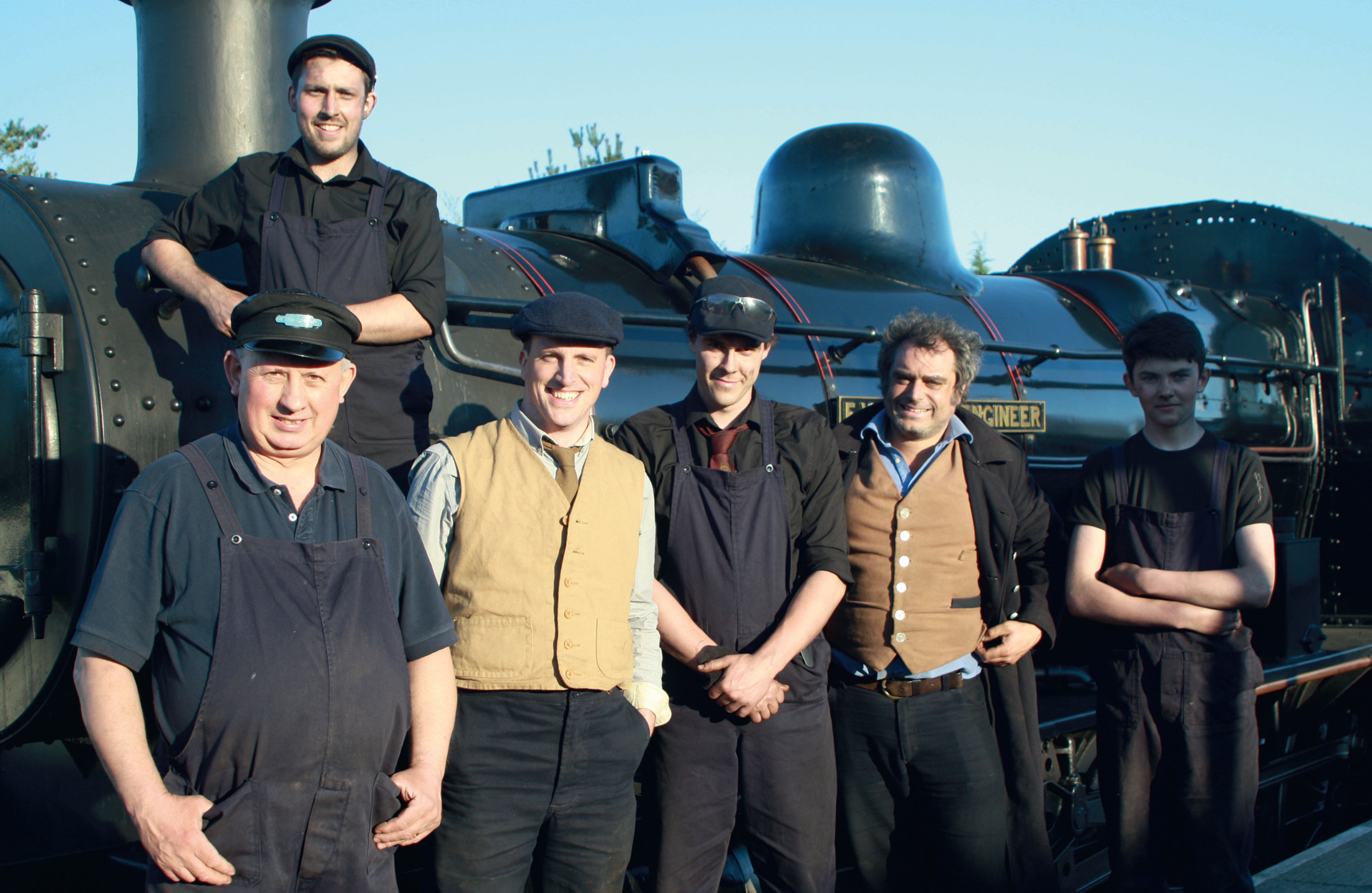
Presenter Peter Ginn pictured together with the Strathspey whisky distillery team, in front of the preserved railway that serves the factory.

Wylam Dilly, sister locomotive of Puffing Billy, photographed in 1862. Suddenly, what had once been only static engines could move, opening up a whole new era in the transportation of both goods and people.
“THE WAY THAT VICTORIAN PEOPLE VIEWED SOCIETY AND INTERACTED WITH ONE ANOTHER CHANGED FOR GOOD.”
Much of nineteenth century industry involved the movement of great weight and bulk – huge amounts of what is collectively known as ‘tonnage’. Lumps of iron, piles of coal, gallons of beer for the workers – they all needed transporting. For the first time ever, the railways enabled heavy materials to be moved quickly and on time. Yet, as much as industry built the railways, the railways built industry. This speed of movement also allowed ideas to travel quickly. Vast quantities of newspapers thundered up and down the country on trains as circulations increased and the telegraph network that accompanied the railways permitted information to be relayed at the speed of light. Something could happen in the Highlands of Scotland, be reported to a newspaper office in London, be printed and then be on sale in a shop in Aviemore, back in the Highlands, before the dust had settled. Suddenly, the whole world was moving at a pace not seen before in human history, and communications would never be the same again.
Consequently, the world became a much smaller place. Developments in the railways in Britain occurred alongside economic, social and political changes and advancements being made in America, Europe and beyond. Lessons were learned and thoughts were shared. A product designed in a small village in Wales could have a major influence on peoples’ lives in northern Russia. As much as railways were pioneered in Britain, their evolution was a worldwide affair.
The way that Victorian people viewed society and interacted with one another changed for good. For a start, if it was ten o’clock in Swansea, then for the first time ever it was also ten o’clock in Newcastle. The introduction of what was known as ‘railway time’ saw to that (see here). The island became unified in a way that it had never been before. The speed of the new transport system also meant that no longer did people have to seek employment close to where they lived. Trains allowed people to commute to work, for the first time ever. The railways also removed the social and economic constraint of having to grow enough food to support a local community. Food imports were nothing new, but until the railways were built, food that spoiled easily – such as fish, milk or vegetables – had to be sourced close to where a population lived. The railways could import these commodities quickly, in some instances faster than it is possible to do so today using an existing courier network. This allowed the countryside to concentrate on the cultivation of perishables and the cities no longer needed to be in easy reach of green fields or had to keep milking cows in an urban environment. Suddenly, the cities could expand and focus on industry instead of agricultural concerns.
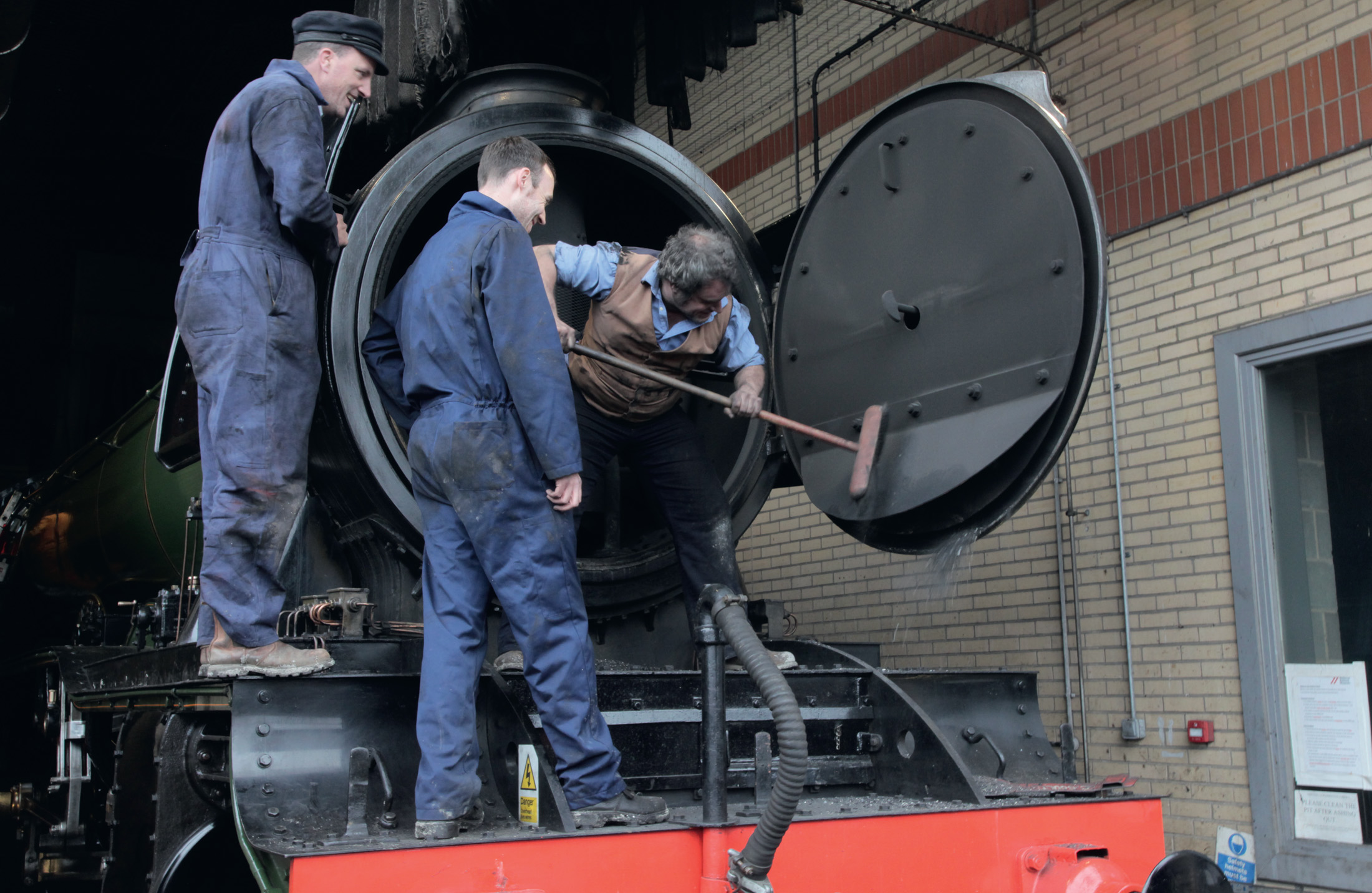
Presenters Peter Ginn and Alex Langlands giving a preserved steam engine a thorough cleaning in the time-honoured – and very necessary – fashion.
Trains cut through impoverished urban environments and gave many their first taste of how the other half lived. This new, widespread awareness of the proliferation of urban slums in Victorian Britain prompted much of the social reform that began in the nineteenth century. Trains also offered travel that was affordable to all but the very poorest, altering the way that the economic classes interacted and changing the natural barriers in Victorian British society.
As a general rule, historians find it difficult to isolate events in history and argue their impact upon society, when they are so well woven into the continuous tapestry of life. However, it is perhaps because of how embedded steam railways are in the development of the modern world that allows us to say they changed the world. Our lives right now are a direct result of the innovators, visionaries, designers, workers and daily users that created and advanced the steam railways. Had that development not have happened as it did, we would be living in a very different society today. Arguably, many of the problems we face today are an indirect consequence of economic, social and political developments in the nineteenth century, but so too are the solutions. Thanks to the introduction of the railways, we may have lost some sense of British regionality, but we can offset that against a sense of British unity.
“TRAINS CUT THROUGH IMPOVERISHED URBAN ENVIRONMENTS AND GAVE MANY THEIR FIRST TASTE OF HOW THE OTHER HALF LIVED.”
It is impossible to contain the entire story of the railways in only one volume. There are countless little anecdotes and backstories that deserve coverage but which would fill many hundreds of pages beyond those contained in this book. For example, did you know that when the Flying Scotsman was running low on supplies or had an onboard emergency, the crew would write a note, insert it into a potato and throw it at a signal box as the train passed by? They did this because, at the time, there was no other way to contact or alert the outside world. However, once the signalman had received the flying potato with its important missive, he could telegraph ahead to ensure that the speeding train’s problem could be addressed further down the line.

The railways gave many people an insight into the horror of urban slum dwellings for the first time. This is Wentworth Street, Whitechapel, in Victorian London, as depicted in an engraving by Gustave Doré, 1872.

Peter, Alex and Ruth welcome you to this book accompanying their television series and hope you will enjoy reading about the establishment of Britain’s steam railways.
Stories like this one and the many nuances of historic railway travel are infinite and most of them lost in time. However, this book is our attempt to go a little deeper than we can on a television screen, to examine a little more closely the detailed history of the railways. To the best of our knowledge the contents are accurate, but we apologise for any mistakes. We hope you enjoy reading about how the railways of Britain changed our lives forever.
Конец ознакомительного фрагмента.
Текст предоставлен ООО «ЛитРес».
Прочитайте эту книгу целиком, купив полную легальную версию на ЛитРес.
Безопасно оплатить книгу можно банковской картой Visa, MasterCard, Maestro, со счета мобильного телефона, с платежного терминала, в салоне МТС или Связной, через PayPal, WebMoney, Яндекс.Деньги, QIWI Кошелек, бонусными картами или другим удобным Вам способом.




